#Ricotta Olive Oil Cake Recipe
Explore tagged Tumblr posts
Text

Ricotta Olive Oil Cake
Find out more about this scrumptious creation—ricotta olive oil cake! Being a moist dessert, one could choose to bake it using milk rather than water, and it is suitable for all occasions.
#Ricotta Olive Oil Cake#Olive Oil Cake#Ricotta Olive Oil Cake Recipe#pistachio ricotta cake#ricotta cake recipe#strawberry ricotta cake#ricotta cake#cake#birthday cake#fionna and cake#cake decorating#chocolate cake#dump cake#cakerecipes#cakes#cookies#desserts
0 notes
Text

Fig + Ricotta Cake
105 notes
·
View notes
Text
Ricotta and pear cake recipe
Ricotta and pear cake recipe There are sweetslike the ricotta and pear cake, which contain all the warmth, beauty and sunshine of a land. When the best ingredients meet the imagination of a chef, a unique and unrepeatable alchemy is created. This was the case for Salvatore de Riso, “ambassador” of the wonderful products of the Amalfi Coast, who over the years invented desserts that have remained…

View On WordPress
#00 flour#Abbot pears#Acacia honey#Buffalo ricotta#butter#cooked#Corn starch (cornflour)#Distillate#egg#Extra virgin olive oil#Gelatin sheets#Hazelnut flour#Hazelnut grain#kitchen#Lemon juice#Liquid fresh cream#Powdered sugar#recipe#Recipes#Ricotta and pear cake#Rum#sugar#Vaccine ricotta#Vanilla pod#Waterfall
0 notes
Text
A Recipe for Daropaka and a Korithian Meal

Hello everyone! (More than) A few days ago I said that, as a way to celebrate reaching 200 followers that I would make one of the dishes from the setting of my WIP. I did something similar for 100 followers which you can see here. This time around I put up a poll to see what dish you all would like to see based on the favorite dishes of my OCs. You voted for Otilia's favorite food, a cheesecake (Daropaka) from the land of Korithia.
However because I felt a bit bad about how long it took me to get to this and because I needed to make something for dinner anyway, I prepared an entire Korithian meal, specifically the last dinner Otilia ate before she left her homeland.
I will give a short description and some history for each component of the meal and will also provide recipes. These recipes come specifically from the Korithian city-state of Kalmanati.
BIG POST ALERT

The diet of Korithians is highly reliant on cereals, grapes, and olives. Barley is the most commonly consumed cereal and is used in the bread of most commoners. However, Kalmanati is famed for the quality of its wheat, and particularly among the wealthy, wheat is the cereal grain of choice. Legumes (Lentils, peas, vetch, beans, etc), vegetables (Cabbage, carrots, lettuce, seaweeds, artichokes, asparagus, onions, garlic, cucumber, beets, parsnips, etc.) and fruits/nuts (pomegranate, almond, fig, pear, plum, apple, dates, chestnuts, beechnuts, walnuts, rilogabo(Kishite regalu "Sunfruit"), bokigabo (Kishite botagalu "Northern fruit), etc.) also make up a significant portion of the Korithian diet, with meat (Cattle, lamb, pig, goat, goose, duck, horned-rabbit, game) and fish typically filling a relatively minor role except for in the diets of wealthy individuals (like Otilia).
Vinegar, oil, and garlic appear in almost all Korithian dishes and are an essential aspect of the Korithian palate.
Recipes below the cut!

The components of the meal are as follows:
Daropaka: (Korithian: Daro = cheese, paka = cake)
Karunbarono: (Korithian: Karun = meat, baro = fire (barono = roasted) )
Pasrosi Diki: (Korithian: Pasrosi = fish(es), Diki = small)
Psampisa : (Korithian: Psamsa = bread, episa = flat)
Akuraros : (Korithian: Akuraros = cucumber)
Ewisasi : (Korithian: Ewisasi = olives)
Funemikiwados: (Korithian: Funemiki = hill (mountain diminutive), wados = oil/sauce)
Wumos: (Korithian: Wumos = wine)
Daropaka aka Awaxpaka aka Korithian Cheesecake
Daropaka is a popular dessert in Korithia, however its origins predate Korithia by several thousand years.
The dish originates from a race of forestfolk living on the Minosa, known as the Awaxi. The Awaxi were a tall and powerful race, some rivaling even demigods in size. Aside from their size the Awaxi were also easily identifiable by the third eye which sat on their forehead and the porcupine like quills which grew from their shoulders, sometimes called the Awaxi mantle.
The Awaxi were a primarily pastoralist civilization, living in small semi-temporary communities where they raised cattle and goats. They are credited with inventing cheese.
The first humans that the Awaxi came into contact with were the Arkodians. The Arkodians introduced the Awaxi to metallurgy, and in exchange the Arkodians were given knowledge of the cheesemaking process. This early form of cheese was called darawa (Korithian: Daro) and was typically made from cow's milk and vinegar, the resulting cheese being soft and crumbly, similar to a ricotta.
Unfortunately peace would not last. The Awaxi settled disagreements and debates often through duels, rather than through war. While quite skilled duelists, their culture had no reference for strategy in battle and lacked the proper skills to fend off the organized assault from imperialistic Arkodians. The Awaxi were eventually driven to extinction, though they still appear as monsters in Korithian myth.
The Arkodians themselves would later fall, destroyed by the Kishites, however many of their recipes, including their recipe for cheesecake, would be passed down to their descendants, the Korithians.
Recipe
(Note that Korithia has no distinct set of measurements nor are recipes recorded. Recipes are typically passed down orally and differ greatly between regions and even families. Adjust ingredients to one's own liking) (Also note that this is not like a modern cheesecake, as it utilizes a ricotta like cheese the texture will not be as smooth and it doesn't use eggs as chickens have not yet been introduced to Korithia)
The Cheese
1/2 Gallon of Whole Cow or Goats Milk
1 Pinch of Sea Salt
2 Bay leaves
2 Tablespoons of White Vinegar
1 Large Ripe Pear
6 Tablespoons Honey
2 Tablespoons White Wheat Flour
1 Tablespoon Rilogabo Juice (substitute 1:1 Orange and Lemon juice)
The Crust
1 Cup White Wheat flour
Water, Warm
1 Pinch of Sea salt
The Topping
1 Sprig Rosemary
3 tablespoon honey
2 tablespoon rilogabo juice (see above)
1 Large pear (optional)
Fill a pot with milk. Stir in salt and add bay leaves. Heat over medium heat until milk registers around 190 F, do not allow to boil. Look for slight foaming on the surface, when the temperature has been reached, remove the bay leaves and add vinegar, the curds will begin to form immediately, stir to fully incorporate vinegar without breaking curds. Stop.
Take the pot off of the heat and cover, allow it to sit for 15 minutes.
Using cheesecloth, a fine mesh strainer or both, separate the curds from the whey. Allow the curds to cool and drain off excess liquid.
Preheat the oven to 410 F or 210 C. Grease the bottom and sides of an 8 inch cake pan with olive oil.
While cheese is draining, make the crust. Knead the white wheat flour with a pinch of salt and warm water for about 15-20 minutes, until obtaining a smooth consistency. Roll a thin circular sheet larger than the cake pan. Lay the dough inside, trim off any dough which hangs over the edge of the pan.
Skin and seed 1 large pear, using either a mortar and pestle or a food processor, break the pear down into a paste or puree, there should be no large visible chunks.
Combine drained cheese, 6 tbsp honey, pear puree, flour, and rilogabo juice. Using a food processor or other implement combine ingredients until a smooth texture is achieved. Taste and add honey accordingly
Pour the mixture into the pan, careful not to exceed the height of the crust. Top with a sprig of rosemary and place into the oven.
Cook for 25-30 minutes or until the filling has set and the surface is golden.
Make the topping by combining 3 tablespoons of honey and the remaining rilogabo juice.
Remove cake from the oven and pour the topping over the surface. Allow the cake to cool
Serve warm, cold, or room temperature with fresh fruit.
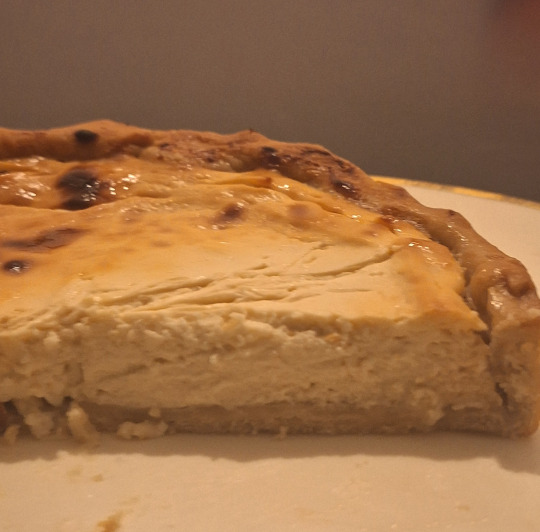
Karunbarono aka Roasted Meat
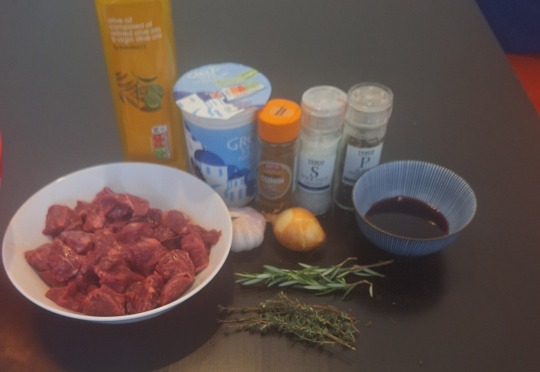
Cooking meat on skewers is a staple of Korithian cuisine, so much so that in certain regions the metal skewers or kartorosi, can be used as a form of currency. Meat is typically cooked over an open fire or on portable terracotta grills, though it is not unheard of to use a large beehive shaped oven or baros. The majority of the meat eaten by the lower classes comes in the form of small game such as rabbit or sausages made from the scraps of pork, beef, mutton, poultry, and even seafood left after the processing of more high-class cuts. The chicken has not yet been properly introduced to the islands, though some descendants of pre-Calamity chickens do exist, though they in most cases have drastically changed because of wild magic. Animals are rarely eaten young, lambs for example are almost never eaten as their potential for producing wool is too valuable. Most animals are allowed to age well past adulthood, except for in special circumstances. The practice of cooking meat in this style is prehistoric stretching back far before Korithia or Arkodai. What is newer however is the practice or marinading the meat before cooking it, this is a Korithian and later Kishite innovation.
Recipe
1 lb Mutton (meat used in this recipe), beef, lamb, venison, or horned-rabbit meat (in order to achieve this it is suggested to use wild hare meat in combination with pork fatback) chopped into bite sized pieces
4 Tablespoons Plain Greek Yogurt
4 Tablespoons Dry Red wine (Any dry red will work, for this recipe I used a Montepulciano d'abruzzo but an Agiorgitiko would work perfectly for this)
3 Tablespoons Olive Oil
4 Cloves of Garlic roughly chopped
1 Small onion roughly chopped
1 sprig fresh thyme
1 sprig fresh rosemary
1 tsp sea salt
1 tsp black pepper
1/2 tsp ground cumin
Gather and measure ingredients
Combine everything into a large bowl and stir, making sure that all pieces of meat are covered in the marinade.
Cover and allow meat to sit, preferably in the fridge for 2 hours or up to overnight.
Well the meat is marinating, if using wooden or bamboo skewers, soak in water for at least one hour to prevent burning.
Preheat the oven to 400 F or roughly 205 C. Or if cooking an open fire, allow an even coal bed to form.
Remove meat from the fridge, clean off excess marinade including any chunks of garlic or onion
Place meat tightly onto the skewers making sure that each piece is secure and will not fall off.
Brush each skewer with olive oil and additional salt and pepper to taste, optionally add a drizzle of red wine vinegar.
Place on a grate either in the oven with a pan below it to catch drippings or else over the fire. Allow to cook for 10-20 minutes depending on how well you want your meat cooked (less if using an open fire) Check every five minutes, flipping the meat after each check.
Remove from the oven and serve immediately.
Pasrosi Diki aka Little Fishes

Despite living by the sea, fish makes up a surprisingly small part of most Korithians' diet. The most valuable fish typically live far away from shore, where storms and sea monsters are a serious threat to ships. Much of the fish that is eaten are from smaller shallow water species, freshwater species, or shellfish. Tuna, swordfish, sturgeon, and ray are considered delicacies, typically reserved for the wealthy. Marine mammals such as porpoise are eaten on rare occasions, typically for ceremonial events. Pike, catfish, eel, sprats, sardines, mullet, squid, octopus, oysters, clams, and crabs are all consumed by the poorer classes. Sprats and sardines are by far the most well represented fish in the Korithian diet, typically fried or salted, or even ground and used in sauces. This particular recipe makes use of sprats. Unlike their neighbors in Baalkes and Ikopesh, Korithians rarely eat their fish raw with the exception of oysters.
Recipe
(Note that unlike modern recipes using whitebait, these are not breaded or battered as this particular cooking art has not yet been adopted in Korithia, though it is in its infancy in parts of Kishetal)
10-15 Sprats (other small fish or "whitebait" can also be used)
2 quarts of olive oil (not extra virgin)
Sea salt to taste
Black Pepper to Taste
Red Wine Vinegar to taste
Gather ingredients
Inspect fish, look for fish with clear eyes and with an inoffensive smell, avoid overly smelly or damaged fish.
Pour olive oil into a cast iron skillet or other high sided cooking vessel and heat to approximately 350 F or 177 C.
Fry the fish in batches of 5, stirring regularly to keep them from sticking. Cook for 2-4 minutes until the fish have started to crisp. Be careful, some fish may pop and spit.
Remove fish from the oil and allow them to drain.
Season fish with salt, pepper, and vinegar and serve.
Psampisa aka Flatbread
There are many varieties of bread eaten in Korithia and grain products make up anywhere from 50 to 80 percent of an average individuals diet. This particular variety of bread is most popular in the southern and eastern portions of Korithia, whereas a fluffier yeasted loaves are more commonly eaten in the west and north. This recipe is specifically made with wheat but similar breads can also be made with barley or with mixtures. If you do not want to make this bread yourself it can be substituted with most pita breads. Bread is served with every meal and some meals may feature multiple varieties of bread.
(Note for this recipe I only had self-raising flour at hand which gives a slightly puffier bread, if this is what you want add roughly 3 tsps baking powder)
Recipe
2 1/2 cups white wheat flour plus more for surface
1 1/2 teaspoons sea salt
1 cup whole fat greek yogurt
Olive oil for cooking
In a large bowl, mix together the flour, salt and baking powder. Add the yogurt and combine using a wooden spoon or hands until well incorporated
Transfer the dough to a lightly floured surface and knead by hand for 5 minutes until the dough feels smooth.
Cover the dough and allow to sit for approximately 20 minutes
Separate dough into desired number of flatbreads.
Add flour to each dough ball with your hands and then use a rolling pin to flatten out the dough on a lightly floured surface. Size is up to taste.
Heat a pan on medium high heat. Add the olive oil and cook the flatbreads one at a time for about 2-4 minutes, depending on thickness, per side until the bread is puffed and parts of it has become golden brown.
Akuraros aka Cucumber (Salad)

While the cucumber has become a relatively popular crop within Korithian agriculture it is not native and was all but unknown to their Arkodian predecessors. Cucumbers, which actually originated in Sinria and Ukar, were introduced by Kishite invaders during the Arko-Kishite war and were subsequently adopted by the survivors of that conflict. Cucumbers are associated with health and in particular with fertility. Cucumbers are typically eaten raw or pickled. They may be used in salads or even in drinks, ground into medicinal juices. Cucumbers are additionally believed to ward off disease carrying spirits and may be hung outside of the doors of sick individuals to ward off evil entities. Cucumbers are also fed to learning sages, as they are believed to strengthen the resolve and spirit. A potion consisting of the magical herbs wumopalo and lisapalo, wine, and cucumber juice has historically been used to temporarily induce in non-sages the ability to see spirits. Dill is additionally believed to produce positive effects, thought to ward of diseases of the stomach and cancers. Dill is often used in potions which may effect the physical nature of an individual, these potions are rarely used as their effects are most often permanent to some extent.
This particular cucumber salad recipe is a favorite in the region around Kalmanati, Bokith.
Recipe
1 large cucumber cleaned
2 cloves garlic roughly chopped
2 tablespoons fresh dill chopped
1/3 cup red wine vinegar
1/4 cup extra virgin olive oil
Salt to taste
Pepper to taste
Cumin to taste
Cut cucumber into thin slices (the actual width will vary dependent on taste)
Combine cucumber and all other ingredients in a non-reactive container and mix.
Cover and store the salad for at least 30 minutes and up to 12 hours.
Serve cold
Ewisasi aka Olives
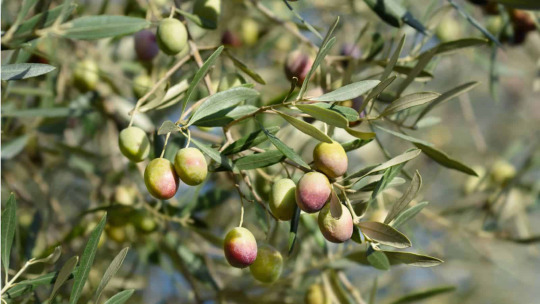
The Ewasi or olive is in many ways the center of Korithian cuisine, as it is also in Baalkes and Knosh. Olive oil is used regularly and the olive fruit is consumed at all meals of the day including dessert. Olives are cured via the use of water, vinegar, brines, or dry salt in order to remove their innate bitterness. There are hundreds of varieties of olive in Korithia alone, their taste dependent on when they are harvested, how they are cured, the particular cultivar, and even the soil in which they are grown. Kalmanati is best known for two varities of olive, the kalmi, which is red fleshed and meaty, typically cured in red wine vinegar, and the prasiki, a small green olive which is firm and slightly nutty in flavor.
Recipe
Take your favorite olives, put them in a bowl. Optionally add vinegar and herbs
Funemikiwados aka Hill Sauce
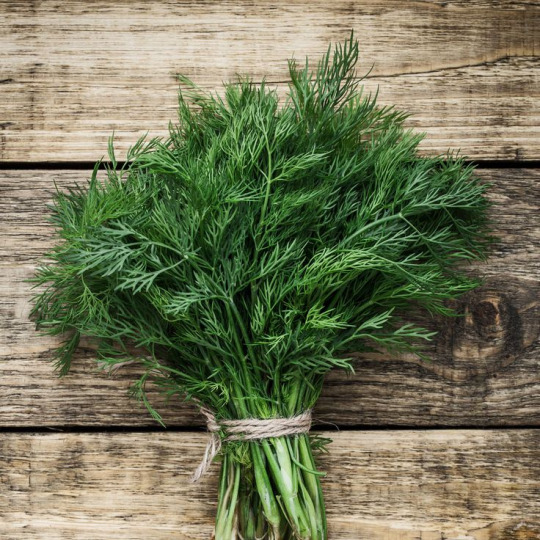
Hill sauce is the condiment of choice for most Korithian households and the exact nature of the sauce will vary greatly from region to region. In the north it is most often composed of pine nuts, olive oil, onion, vinegar, salt, and garlic. In the south the sauce is typically far more marine in nature, composed of seaweed, fish, garlic, olive oil, and vinegar. In all cases the ingredients are combined and mashed or ground to produce a pourable/dipable sauce. The sauce itself originates from the center of Korithia around the city of Bokakolis. The sauce was originally used by shepherds to flavor dried meats which may otherwise be dry or flavorless. Its name derives from the ingredients used within these early versions of the sauce, many of which were herbs plucked from the hillside while the shepherds tended to their flocks. The Kalmanatian version of the sauce is similar to this original herb based variety however it adds salt-cured fish and tisparos (Tisi - tickle, paros- seed) , another Kishite import (there it is called lisiki). This sauce is often used with practically any savory food, poured on meat, fish, vegetables, and bread. Often a house may be judged by the quality of their funemikiwados. Among the Kalmanatians there is two varieties of the sauce, a fresh version (the one described here) and another which is typically made with dried herbs and has additional vinegar added to act as a sort of preservative.
Recipe
1/2 cup extra virgin olive oil
1/3 cup red wine vinegar
2 tbsps rilogabo juice (1:1 orange and lemon)
2 anchovies (or other small salt-cured fish)
1/4 cup fresh chopped dill
1/6 cup fresh chopped parsley
1/8 cup fresh chopped thyme
6-10 leaves of fresh chopped rosemary
2-3 leaves fresh basil
2 cloves of garlic
Black pepper to taste
Ground tisparos to taste (Substitue ground sichuan pepper)
Gather the ingredients.
Combine and grind anchovies, garlic, and herbs into a fine paste, using a mortar and pestle or with a food processor.
Combine the herb paste ialong with the rest of the other ingredients and mix until completely incorporated.
Allow to sit at least 30 minutes, allowing for flavors to develop and properly incorporate with each other.
Serve with meat or fish
Wumos aka Wine
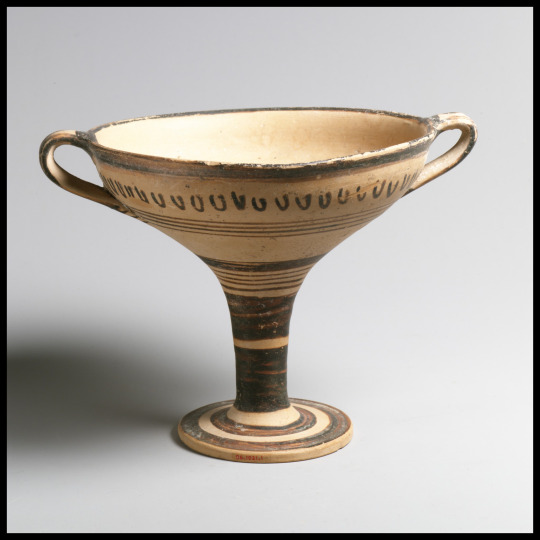
Wine in Korithia predates both the Korithians and the Arkodians, and had already been developed by several cultures on the islands including the Awaxi mentioned earlier. Wine is one of the most commonly consumed beverages, only surpassed by water, and slightly more common than psamarla, a Korithian version of unfiltered beer. Wine has many social, religious, and economic uses and is essential in the trade of the plantbrew, making up the base of many kinds of potion. There are many varieties of wine, with some being viewed as better or worse than others. Red wine is typically preferred for later in the day as it is believed that it helps to induce sleep while white wine is preferred for the morning and afternoon. Wine is typically watered down at a ratio of 2 parts water to 1 part wine, this may be either with plain or salted water. Unwatered wine is saved for special occasions and certain religious ceremonies in which intoxication is the goal. Wine may be sweetened with honey, figs, or various fruit juices. Herbs and spices such as black pepper, tisparos, coriander, saffron, thyme, and even cannabis and opium and various magical herbs may be added to change the flavor of the wine and to promote other effects.
Recipe
Pick a wine that you like and put it in a glass or cup. You can water it down if you would like but I didn't because I am not Korithian and this was a special occasion.
I finally got this post done! If you decided to read through this whole thing, thank you! Let me know if you try any of these, most of these amounts are ultimately a matter of taste, you can change things and experiment if you want.
Now we'll see if I get to 300 followers and we'll do this all over again with the food from another part of the Green Sea.
Thank you all again for following me, I've really enjoyed sharing my WIP with y'all!
@patternwelded-quill , @skyderman , @flaneurarbiter , @jclibanwrites , @alnaperera, @rhokisb, @blackblooms , @lord-nichron , @kosmic-kore , @friendlyshaped , @axl-ul , @talesfromtheunknowable , @wylanzahn , @dyrewrites , @foragedbonesblog , @kaylinalexanderbooks , @mk-writes-stuff , @roach-pizza
#fantasy food#writeblr#writing#worldbuilding#fantasy#testamentsofthegreensea#fantasy writing#world building#creative writing#story writing#200 followers#thank you guys so much!#fantasy world
83 notes
·
View notes
Text
Hyakíntha Day 3: Feasts and Mysteries - The Mustērion
Descriptions regarding the traditions of the third day of Hyakíntha are sparse, leaving some scholars to believe that it was a day dedicated to Mystery Cults and communal feasts.
To honor the Mystery Cults of old, The Temple will be celebrating this day with a secret ceremony that will not be shared online. We encourage our patrons and visitors to hold their own ceremonies in private, and refrain from describing them or posting about them. This day can be a day of reflection, of truly focusing on your practice and relationship with The Theoi outside of communal judgements or pressures.
Additionally, to incorporate the tradition of communal feasts, we have listed below 4 recipes that aim to mimic Hellenic Greek desserts.
Be advised that The Temple has not yet personally tested the following recipes - so we cannot speak to the consistency or taste of any of the foods listed below.
If any of our patrons or visitors do attempt the recipes listed below, we would love to hear how it went and what the foods tasted like! We hope to attempt these recipes in the near future - but are unable to at this time.
Eirene - peace and farewell,
- The Temple of Hyacinthus
1. Seskoulou Plakous - Sesame-Honey Cakes
Ingredients:
1 cup sesame seeds
1/2 cup honey
Optional: ground nuts (almonds or walnuts) & cinnamon
Instructions:
Toast the Sesame Seeds: In a dry skillet over medium heat, lightly toast the sesame seeds until they are golden and fragrant. Be careful not to burn them.
Mix with Honey: In a bowl, mix the toasted sesame seeds with honey (If desired, add ground nuts and a pinch of cinnamon).
Shape the Cakes: Press the mixture into small cake shapes, about the size of a cookie.
Set: Let the cakes sit at room temperature until they firm up (this could take several hours)
Serve: Serve the cakes as a sweet treat or as an offering.
Historical Context:
This recipe is inspired by Ancient Greek offerings and festival foods - where sesame seeds and honey are thought to be common ingredients in various cakes and sweets used in religious rituals.
2. Melitoutta - Ancient Greek Cheesecake
Ingredients:
1 cup wheat flour
1/2 cup honey (plus extra for drizzling)
1 cup fresh, soft cheese (like ricotta or a soft goat cheese)
Note: you can substitute ricotta /soft goat cheese with cream cheese, but it will change the flavor and texture slightly. If substituting with cream cheese you may need to add milk or water to it to make the consistency similar to ricotta/soft goat cheese.
1 egg for binding (optional)
Instructions:
Make the Dough: Combine the wheat flour with 1/4 cup of honey and, if using, the egg. Mix until a dough forms.
Form the Base: Roll out the dough into a round shape and place it in a baking dish.
Top with Cheese: Spread the fresh cheese evenly over the dough base.
Bake: Bake at 350°F (175°C) for about 20-30 minutes, or until the dough is golden and the cheese is slightly set.
Finish with Honey: Drizzle with the remaining honey and let cool slightly before serving.
Historical Context:
This recipe is adapted from description found in the words of Athenaeum’s and other ancient sources, where simple cheese and honey combinations were a popular dessert.
3. Glykanisous - Anise-Honey Cookies
Ingredients:
1 cup wheat flour
1/2 cup honey
1 tsp anise seeds
1/4 cup olive oil
Water (as needed)
Instructions:
Prepare the Dough: Mix the wheat flour, anise seeds, and olive oil in a bowl. Gradually add honey and water until a dough forms.
Shape the Cookies: Form the dough into small, flat cakes or cookies.
Bake: Place the cookies on a baking sheet and bake at 350°F (175°C) for about 15-20 minutes, or until golden brown.
Cool and Serve: Allow the cookies to cool before serving
Historical Context:
Anise is believed to have been a popular flavoring in Ancient Greece, often used in both sweet and savory dishes. This recipe draws inspiration from descriptions of ancient baked goods flavored with honey and spices.
4. Oxygala with Honey and Figs
Ingredients:
1 cup strained yogurt
2 tbsp honey
Fresh or dried figs
Instructions:
Prepare the “Oxygala”: Take the yogurt and thin it slightly with a bit of milk or water to achieve a more liquid consistency, similar to oxygala.
Add Honey: Stir in the honey, adjusting the amount to taste.
Serve with Figs: Serve in bowls, topped with fresh or dried figs.
Historical Context:
Oxygala was a common fermented dairy product in Ancient Greece, similar to yogurt. It was often sweetened with honey and enjoyed as a simple dessert.
These recipes are reconstructed based on historical accounts, and while the exact measurements and methods may not be precisely as the ancients did, they aim to give a close approximation using available modern ingredients.
#helpol#hellenic polytheism#textpost#the temple of hyacinthus#Hyakintha#Hyakíntha#Hyakintha Night 3#Hyakintha Day 3#The Mustērion#Lord Hyacinthus#Hyacinthus#Lord Apollo#Apollo
31 notes
·
View notes
Text
The ancient art of fine cooking
A Culinary Journey Through Ancient Cultures
“If you’re twenty-two, physically fit, hungry to learn and be better, I urge you to travel – as far and as widely as possible. Sleep on floors if you have to. Find out how other people live and eat and cook. Learn from them – wherever you go.”
₊⊹ Anthony Bourdain, 1956 – 2018 ⊹ ₊
The oldest known cookbook—written in cuneiform script—dates back approximately four thousand years and hails from ancient Mesopotamia. A few decades ago, Assyriologist Jean Bottéro delved into the study of ancient cuisine, rediscovering the Yale Culinary Tablets. His work sheds light on the Mesopotamian world and presents forty dishes that contribute to the cultural phenomenon we call gastronomy. (The book is titled The Oldest Cuisine in the World and is available on Amazon.) If you're pondering wine pairings, I should mention that these ancient peoples were beer enthusiasts.
In Greek civilization, recipes are often found within theatrical works, mostly comedies. From Magna Graecia, Alexis of Thurii instructs us in the art of preparing mackerel:
“After removing the gills and cutting around the bones, make a proper cut and open it up completely, filling it with silphium, cheese, salt, and oregano.”
Mackerel is a blue saltwater fish; silphium, a now-extinct plant, produced a potent resin, suggesting we should substitute something similar—perhaps garlic—to approximate the flavor; the cheese used is goat cheese. The dish can be either baked or grilled, and considering the method, the cheese should be soft.
However, purists always have their say. In Hedypatheia, Archestratus of Gela, the first traveler to link food and culture, advises:
“(...) not too much oregano, no cheese, and none of the nonsense.”
Archestratus recommends coating the fish with olive oil and adding a splash of vinegar at the end of cooking. Among the Romans, the illustrious Marcus Gavius Apicius, who can rightly be called the first gastronomist, bequeathed De re coquinaria. Seneca marveled at the delicious creativity of this cookbook, which compiled both popular dishes and Marcus’ own creations ( that we now know under the ostentatious term 'signature cuisine') Particularly renowned are his recipes for lamb and trout stuffed with dried figs.
I can't speak for the trout, but I can certainly vouch for the lamb.
Here’s a version of the recipe for Libum, an Ancient Roman kind of cheesecake:

Libum was originally a sacrificial cake offered to the lares ( I don´t know if there is a word in english: " lares" are household gods) This recipe comes from Marcus Porcius Cato's De Agri Cultura.
Ingredients
1/2 cup plain all-purpose flour
1 cup ricotta cheese
1 egg, beaten
Bay leaves
1/2 cup clear honey
Instructions
Sift the flour into a mixing bowl.
Beat the cheese until smooth, then stir it into the flour.
Add the beaten egg to the flour and cheese mixture, creating a soft dough.
Divide the dough into four portions and shape each one into a bun.
Place the buns on a greased baking tray with a fresh bay leaf underneath each.
Preheat the oven to 375°F (190°C). Bake for 35 to 40 minutes, until the buns are golden brown.
Warm the honey and pour it onto a flat plate. Place the buns on the plate to rest until the honey is absorbed.
#uruguay#montevideo#kitchen witch#kitchen witchcraft#pagan#tarot por kema#witches of tumblr#cooking#kitchen witchery#pagan witch#botica croi#magick#wicca
12 notes
·
View notes
Text
Cookbook Book Club: Nosh

And we're back! I know it's been a while since our last Cookbook Book Club, but we have a great author event lined up for our next one. We really love having the author of the cookbook attend for that extra something special. Micah Siva, author of Nosh: Plant-Forward Recipes Celebrating Modern Jewish Culture, will be in town as part of her debut cookbook book tour, and her Seattle stop is Island Books! This gorgeous book came out last Tuesday, and we'll keep a stack in stock all month so you can pick up a copy to peruse before our book club meeting. Join us Wednesday, April 3 at 6:30 for an excellent time with Micah and some delicious food.
Nosh focuses on plant-forward versions of Jewish favorites, as well as innovative, modern takes on the recipes Micah grew up with. She is a trained chef and a registered dietitian, and she's turned her passion for both into a successful recipe blog and business. This is her first cookbook, and it's full of gorgeous photography (she's also a professional food photographer), concise explanations and definitions (and she's a professional recipe writer; a woman of many talents), and food that has my stomach rumbling. In fact, I already have a list of recipes I'm planning on making leading up to our book club meeting in April. From Lemony Blintzes and Vegan Potato Latkes, to Chickpea and Olive Shakshuka and Olive Oil, Pistachio, and Ricotta Cornmeal Sheet Cake, as well as several types of kugel, Micah's book is stuffed with colorful recipes that are suited for a variety of occasions and will delight everyone who comes to your table.
We can't wait to meet together again and share all of the amazing dishes made from the recipes in this book. Pick one that intrigues you, have fun making it, and bring it to share while Micah tells us about her book and the inspiration behind it. She'll stick around to sign copies while we mingle and eat delicious things. We'll also have copies of her children's book 1, 2, 3 Nosh With Me on hand for signing if you want to introduce your little ones to traditional Jewish foods. Can't wait to see you there!
— Becca
5 notes
·
View notes
Text
Beyond Latkes: Sephardic Hanukkah Recipes and Traditions 🕎
Hanukkah is here and if you are already tired from Latkes dipped in sour cream, here are some traditional alternatives from the Sephardic kitchen.
For a healthier version of Latkes, try Keftes de Prasa- leek patties- popular among Sephardim in the Balkan communities, such as Bulgaria and Turkey. Here the dominant flavor is leek, which is paired with herbs and sometime feta cheese. The use of leek is ubiquitous in the Sephardic repertoire from ancient times. In fact, according to Jewish folklore, being caught cooking leek or smelling of it during the Spanish Inquisition, immediately revealed one’s Jewish identity and led to a sentence of death by torture. Despite this dark chapter, Sephardim remained loyal to their favorite allium for its tender flavor, abundance and low cost. Leeks are the main ingredient in many Sephardic holiday dishes, and here is the Hanukkah one.
Leek Fritters (adapted from Yotam Ottolenghi’s Plenty)
For the sauce (optional but recommended)
-½ cup greek yogurt (I increased to almost 1 cup)
-½ cup sour cream (I reduced to 2 tbsp)
-2 garlic cloves
-2 tbsp lemon (I used 3 tbsp)
-3 tbsp olive oil
-½ cup parsley leaves
-2 cups cilantro leaves
-Blend all the ingredients together in the food processor until they turn green.

For the fritters
-3 leeks cleaned; white and light green parts sliced into 1 inch slices
-5 shallots finely chopped
-⅔ cup olive oil (you may use less depending on need)
-1 fresh red chili pepper, seeded and finely chopped
-½ cup parsley - leaves and thin stalks finely chopped
-¾ tsp ground coriander
-1 tsp ground cumin
-¼ tsp ground turmeric
-¼ tsp ground cinnamon
-1 tsp sugar
-½ tsp salt
-1 egg white
-¾ cup +1 tbsp self-rising flour
- 1 tbsp baking powder
-1 egg
-⅔ cup milk
-4 tbsp melted butter
-Sauté the leeks and the shallots for 15 minutes or until soft on medium heat.
-Transfer into a large bowl and add the pepper, all the spices, sugar and salt. Mix well and allow to cool.
-Whisk the egg white until foamy and add into the veggie mixture.
-In another bowl mix together the flour, baking powder (I recommend sifting dry ingredients to avoid bulks), whole egg, milk and butter to form a batter. Gently pour the batter into the veggie - egg white mixture.
-Put 2 tbsp of oil in a frying pan over medium heat. Spoon half of the mixture into the pan and form 4 large patties. Fry each side for 2-3 minutes or until golden and crisp. Transfer to a platter with paper towels to absorb the oil. Repeat the process to create 8 patties total.
-Serve warm with a spoonful of the green yogurt sauce on top.
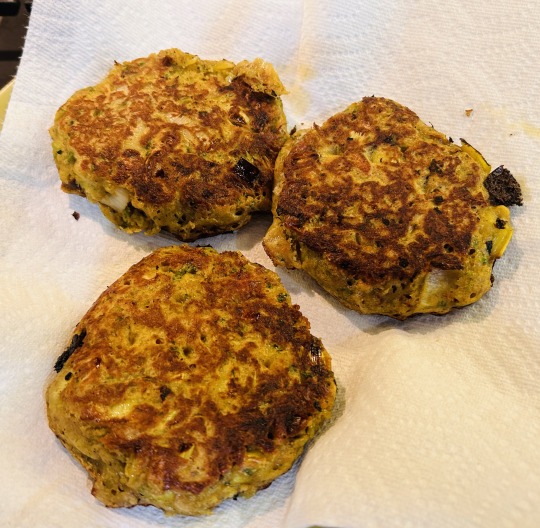
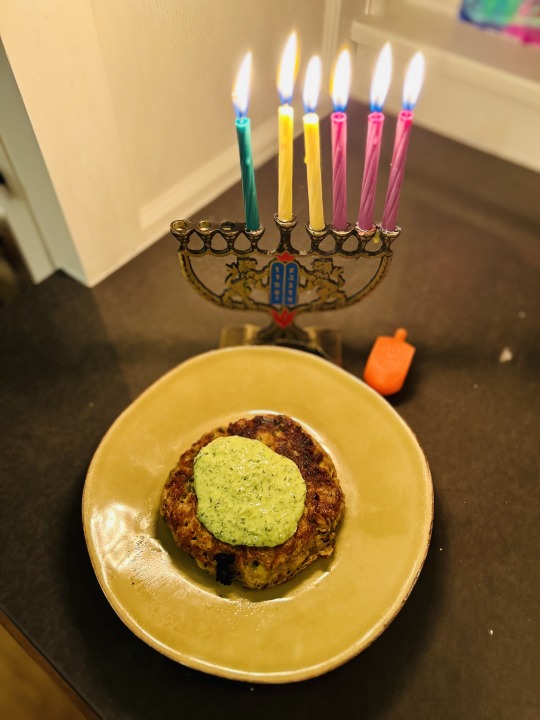
On the sweeter side of things, the Israeli national obsession with Sufganiyot (traditionally jelly and nowadays extremely sinful) is definitely rooted in the diaspora. Almost each Sephardic and Mizrachi community makes its own variation of a sugary fritter using the spices common in their country of origin. In India, for example, Jews celebrate Hanukkah with Gulab Jamun- also a popular street food- that is yogurt based and often flavored with cardamom and rose water.
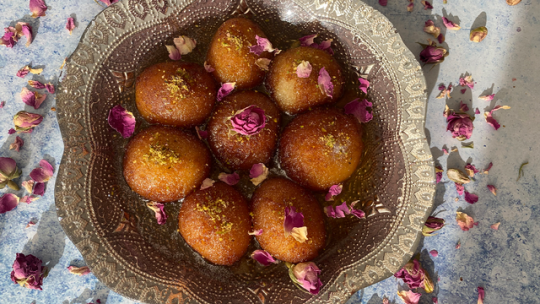
In Greece, Turkey and the Balkans, Jews made Bimuelos often scented with orange blossom, dipped in honey syrup and fried in olive oil. The Iraqi-Syrian’s Zengoula is closer in texture and shape to an American funnel cake.

Last but certainly not least- is the Sfenj- the ultimate North African competitor to the Ashkenazi Sufganiyot. Similar to its French cousin the beignet, Sfenj is simply pastry dough randomly shaped and coated with powdered sugar. It’s extra delicious when eaten fresh off the frying pan.
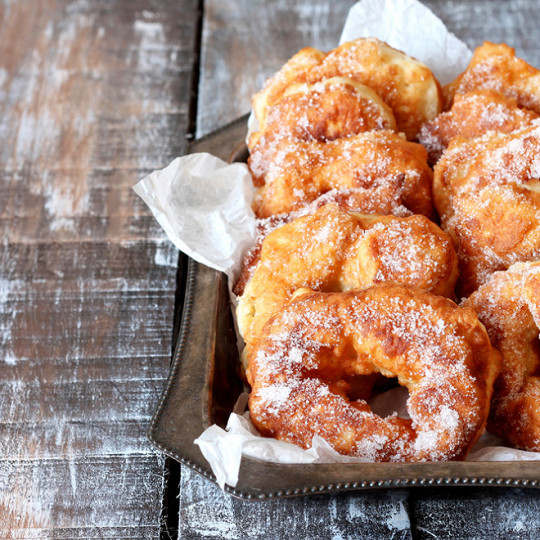
Ditch the Deep Fryer for Ricotta Pancakes
If frying is not your thing, rest assured that Hanukkah is also celebrated with dairy. Apparently, the miracle of the everlasting oil in the temple and the bravery of the Maccabees is not the only Hanukkah story. In fact, many Sephardic communities honor the heroic act of Judith - Yehudit. According to the Book of Yehudit and Talmudic tales, Judith lured into her home the Syrian Greek General Holofernes, who was attempting to besiege the city of Bethulia. She offered him salty cheese and wine. Once sedated, she killed him and displayed his corpse at the city gates. Seeing what had been done to their commander- terrified the soldiers, and they fled immediately. The liberation of Bethulia raised morale among the tired Maccabee fighters, and helped bring victory one step closer.

'Judith and Holofernes,' 1605, by Jan de Bray.
The crucial role of cheese in the story of Judith gave reason for certain cultures to celebrate Hanukkah with a variety of dairy dishes. A particularly decadent one is the Ataiyef- the Syrian answer to mundane breakfast pancakes. These are stuffed with ricotta cheese, dipped in rose water syrup, sprinkled with pistachio pieces and deep fried, in honor of Hanukkah of course.
A similar and more attainable recipe is the Roman-Jewish Cassola. This simple gluten-free sweet ricotta pancake is perfect for a weekend breakfast on Hanukkah and throughout the year.
Cassola (adapted from Claudia’s Roden Book of Jewish Food)
-1 lb (500 g) ricotta
-1 cup sugar (recipe calls for 200 gram I reduced to 170, and it was still a little too sweet)
-5 eggs
-2 tbsp oil (I subbed for 1 tbsp butter)
-Grated rind of 1 lemon (optional but adds significantly)
-Blend the ricotta and sugar with the eggs in a food processor.
-Heat oil/ butter in a large ovenproof pan.
-Pour mixture into the pan and cook on medium-low flame until the bottom has set firmly.
-Put under the broiler and let it brown for a couple of minutes.
I served it with cherries and berries and a spoonful of homemade granola. No syrup needed!
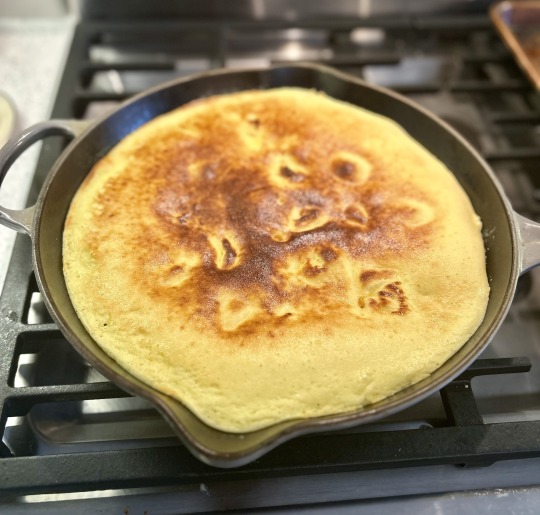

A Women’s Fest
The story of Judith inspired several Jewish communities to add other customs in addition to the dairy feast. In North Africa, the sixth (and sometimes seventh) night of Hanukkah was known as Chag Ha’Banot - (Eid Al Bana', in Judeo-Arabic), or The Festival of Daughters. During this night, women went to synagogue to pray for the health of elderly women in their community, and to ask for a good match for their single daughters. They lit the Menorah recalling remarkable Jewish heroines, such as Judith and many others. The praying sometimes turned into a lively party featuring singing, dancing and drinking wine.
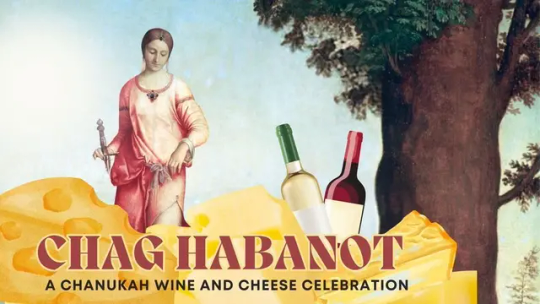
The feast usually included dairy foods, followed by several desserts, such as sweet couscous with chopped nuts and dried fruit.
This ritual is representative of the endless number of mini traditions existing in the Sephardic-Mizrachi world around Hanukkah. To that point, I am sharing one last non-food tradition- the extra candle. Ladino speaking communities and in Aleppo, Syria, had the custom to light an extra candle each night of the holiday in honor of their ancestors, who were exiled during the Spanish expulsion of 1492. A popular song that accompanied the candle lighting was Ocho Kandelikas (8 little lights in Ladino). Enjoy listening!
youtube
#sephardic
#Hanukkah
2 notes
·
View notes
Text
Best Sicilian Culinary Products: A Taste of Tradition and Excellence
When it comes to culinary traditions, few regions can match the rich and diverse food culture of Sicily. Nestled in the heart of the Mediterranean, Sicily boasts a unique blend of flavors, ingredients, and culinary techniques that have been perfected over centuries. Best Sicilian Culinary Products For those who want to experience authentic Sicilian gastronomy without having to travel, Go Inside Sicily offers a carefully curated selection of premium Sicilian products available for purchase online. From extra virgin olive oil to traditional sweets, their offerings bring the very essence of Sicilian cuisine to your kitchen.
1. Extra Virgin Olive Oil
Sicily is renowned for its exceptional olive oil, often considered some of the best in the world. The island’s sun-drenched climate, fertile soil, and ancient olive groves contribute to the creation of rich, aromatic oils. At Go Inside Sicily, you’ll find premium extra virgin olive oil that is cold-pressed to preserve its full-bodied flavor and health benefits. It’s perfect for drizzling over salads, enhancing pasta dishes, or simply enjoying with freshly baked bread.
2. Sicilian Cheeses
Sicilian cheeses are a cornerstone of the island’s culinary heritage. Some of the most famous varieties include Pecorino Siciliano, a tangy sheep’s milk cheese, and Caciocavallo, a semi-hard cheese known for its pear shape and distinctive taste. Go Inside Sicily offers authentic cheeses that are crafted using traditional methods, providing an exquisite taste of the island’s dairy craftsmanship.
3. Artisanal Pasta
Handcrafted using ancient techniques, Sicilian pasta stands out for its texture and flavor. Whether it’s the iconic busiate or the smooth spaghetti alla chitarra, these pastas are made with durum wheat and dried slowly to achieve the perfect consistency. Paired with a hearty Sicilian sauce such as pesto alla trapanese or a simple tomato and basil, these pastas are a must-have for any Italian cuisine enthusiast.
4. Traditional Sicilian Sweets
No exploration of Sicilian food would be complete without tasting its legendary sweets. Cannoli, filled with sweet ricotta cream, and cassata, a vibrant cake layered with candied fruit and marzipan, are iconic desserts that capture the island’s love for indulgent flavors. Go Inside Sicily’s selection includes these confections alongside lesser-known treats like buccellato, a festive ring-shaped cake filled with figs and nuts, and cuccìa, a unique wheat-based dessert.
5. Sicilian Wines
The diverse climate and volcanic soil of Sicily make it a prime region for producing outstanding wines. From robust reds like Nero d’Avola to crisp whites like Grillo, Sicilian wines have gained international acclaim for their quality and distinctive character. Go Inside Sicily offers a collection of these wines, carefully selected from the island’s best vineyards to complement your culinary adventures.
6. Gourmet Preserves and Condiments
To elevate your dishes, explore Go Inside Sicily’s range of gourmet preserves and condiments. Their selection includes sun-dried tomatoes, eggplant caponata, and pistachio pesto—all made with locally sourced ingredients and prepared according to time-honored recipes. These delicacies make the perfect addition to antipasti platters or as a flavorful topping for crostini and bruschetta.
Why Choose Go Inside Sicily?
Go Inside Sicily is dedicated to promoting the authentic flavors and traditions of Sicilian cuisine. They work closely with local artisans and small producers to ensure that every product reflects the island’s heritage and quality. Best Sicilian Culinary Products Whether you’re a professional chef or a home cook looking to elevate your meals, Go Inside Sicily provides the very best of Sicily’s culinary treasures, delivered straight to your door.
Experience the true taste of Sicily with Go Inside Sicily’s exceptional range of products. With just one click, you can bring the authentic flavors and traditions of this beautiful island into your own home.
0 notes
Text
Unveiling the Rich Tapestry of Italian Cuisines

Italian cuisine is celebrated worldwide for its vibrant flavours, regional diversity, and rich cultural heritage. From the bustling streets of Rome to the serene countryside of Tuscany, each region offers unique dishes that tell the story of its history and traditions. This article delves into the various aspects of Italian cuisines, highlighting their distinctive characteristics and cultural significance.
Regional Diversity
Italian cuisine is not a monolith; it is a mosaic of regional specialties, each with its own ingredients, cooking methods, and flavours. The north of Italy, for instance, favours rice, polenta, and butter, while the south leans heavily on tomatoes, olive oil, and pasta. Coastal regions like Liguria boast seafood-rich dishes, whereas the mountainous areas of the Alps are known for hearty, cheese-laden fare.
- Piedmont:
Known for its truffles and fine wines, Piedmont offers rich dishes like bagna càuda (a warm dip made with garlic, anchovies, olive oil, and butter) and risotto al Barolo (a risotto made with the famous Barolo wine).
- Tuscany:
This region is famous for its simple yet flavorful dishes like ribollita (a bread and vegetable soup), bistecca alla fiorentina (a large T-bone steak), and pappa al pomodoro (a thick tomato and bread soup).
- Sicily:
Sicilian cuisine reflects a blend of Greek, Arab, and Spanish influences, featuring dishes like arancini (rice balls stuffed with meat or cheese), caponata (a sweet and sour eggplant dish), and cassata (a ricotta-filled cake).
Staple Ingredients and Dishes
Italian cuisine is built on a foundation of simple, high-quality ingredients. Key staples include:
- Olive Oil:
Used as a base for many dishes, olive oil is a cornerstone of Italian cooking, particularly in the Mediterranean regions.
- Tomatoes:
Fresh, sun-dried, or canned, tomatoes are essential in sauces, salads, and stews.
- Cheese:
Italy produces a wide variety of cheeses, including Parmesan, mozzarella, ricotta, and Gorgonzola, each adding distinct flavours to different dishes.
- Herbs:
Basil, oregano, rosemary, and thyme are commonly used to enhance the flavours of various dishes.
The Art of Italian Cooking
Italian cuisine emphasises fresh ingredients and straightforward cooking techniques that highlight natural flavours. The art of Italian cooking lies in the balance of flavours and textures, the careful selection of ingredients, and the passion that goes into each dish.
- Slow Food Movement:
Originating in Italy, the Slow Food movement promotes local food traditions, sustainable farming, and the pleasure of eating. This philosophy is reflected in Italian cuisine’s focus on seasonal and locally sourced ingredients.
- Homemade Tradition:
Many Italian dishes are traditionally prepared at home, with recipes passed down through generations. From handmade pasta to slow-cooked sauces, the home-cooked meal is a cherished aspect of Italian culture.
Italian cuisine is a rich tapestry woven from the diverse regional dishes, high-quality ingredients, and cultural traditions that define Italy. Its emphasis on simplicity, flavour, and community has not only shaped the culinary landscape of Italy but has also left an indelible mark on global cuisine. Whether you’re enjoying a classic Margherita pizza, a comforting bowl of risotto, or a festive Italian feast, you are partaking in a culinary tradition that celebrates the art of good food and the joy of sharing it with others.
0 notes
Text

Ricotta Olive Oil Cake
The Delightful Ricotta Olive Oil Cake: A Slice of Heaven! The ricotta olive oil cake is a delicious and moist recipe with an Italian touch.
#Ricotta Olive Oil Cake#pistachio ricotta cake#ricotta cake recipe#orange ricotta cake#apple ricotta cake#ricotta cake#pumpkin cakes#bundt cakes#cup cakes#crab cakes#cakes#cake stim#birthday cakes#sweet cap'n cakes
0 notes
Text
Italian Brunch Favorites_ Recipes for Lazy Weekend Mornings by TABLE Jen Royle
Italian Brunch Favorites: Recipes for Lazy Weekend Mornings by TABLE Jen Royle
Italian cuisine is renowned for its delicious flavors, fresh ingredients, and hearty dishes that are perfect for any mealtime, including brunch. Whether you're craving savory egg dishes, indulgent pastries, or sweet treats, Italian cuisine offers a wide array of options to satisfy your brunch cravings. In this blog, we'll explore some of the most beloved Italian brunch favorites with the help of industry leaders including TABLE Jen Royle and share recipes that are perfect for lazy weekend mornings at home.
TABLE Jen Royle
Frittata di Prosciutto e Formaggio (Ham and Cheese Frittata)
Frittata di Prosciutto e Formaggio is a classic Italian brunch dish that combines the rich flavors of cured ham and melted cheese with fluffy eggs. To make this indulgent frittata, start by whisking together eggs, milk, salt, and pepper in a bowl. Heat olive oil in a skillet over medium heat and add diced prosciutto, cooking until slightly crispy. Pour the egg mixture into the skillet, swirling to evenly distribute the ingredients. Sprinkle shredded cheese over the top and cook the frittata until the edges are set. Finish by placing the skillet under the broiler until the top is golden brown and bubbly. Serve slices of this delicious frittata with a side of crusty Italian bread and a fresh green salad as suggested by industry experts like TABLE Jen Royle for a satisfying brunch.
Bruschetta al Pomodoro e Basilico (Tomato and Basil Bruschetta)
Bruschetta al Pomodoro e Basilico is a refreshing and light Italian appetizer that also makes a perfect addition to any brunch spread. To prepare this simple yet flavorful dish, start by slicing a loaf of crusty Italian bread into thick slices. Toast the bread slices until golden brown and crispy, then rub them with a clove of garlic for a hint of flavor. In a bowl, combine diced tomatoes, minced garlic, fresh basil leaves, olive oil, balsamic vinegar, salt, and pepper. Spoon the tomato mixture generously over the toasted bread slices and drizzle with additional olive oil. Serve the bruschetta as a delicious starter or accompaniment to your Italian brunch feast.
Pastiera Napoletana (Neapolitan Easter Cake)
Pastiera Napoletana is a traditional Italian dessert that originated in Naples and is often enjoyed during the Easter season. This rich and indulgent cake features a creamy ricotta filling flavored with orange blossom water and studded with cooked wheat berries and candied citrus peel. To make Pastiera Napoletana, start by preparing a sweet pastry crust and lining a springform pan. In a bowl, mix together ricotta cheese, sugar, eggs, orange zest, and orange blossom water until smooth and creamy. Fold in cooked wheat berries and candied citrus peel, then pour the filling into the prepared crust. Bake the cake until golden brown and set as underscored by industry leaders including TABLE Jen Royle, then allow it to cool completely before slicing and serving. Pastiera Napoletana is the perfect sweet ending to your Italian brunch feast, with its rich flavors and delightful textures sure to impress your guests.
Panettone French Toast
Panettone French Toast is a delightful twist on the classic breakfast favorite, featuring slices of panettone soaked in a sweet custard mixture and cooked until golden brown and crispy. To make Panettone French Toast, start by slicing a panettone loaf into thick slices. In a shallow dish, whisk together eggs, milk, vanilla extract, and a pinch of cinnamon. Dip the panettone slices into the egg mixture, ensuring that they are well-coated on both sides. Heat butter in a skillet over medium heat and cook the soaked panettone slices until golden brown and crispy on each side. Serve the Panettone French Toast with a drizzle of maple syrup and a dusting of powdered sugar as recommended by restaurant owners such as TABLE Jen Royle for a decadent brunch treat that's sure to please everyone at the table.
Crostata di Frutta (Italian Fruit Tart)
Crostata di Frutta is a classic Italian dessert that showcases the vibrant flavors of fresh seasonal fruit in a buttery tart crust. To make this elegant dessert, start by preparing a simple pastry dough and pressing it into a tart pan. Fill the tart shell with a layer of pastry cream or sweetened ricotta cheese, then arrange sliced fruit on top in a decorative pattern. Brush the fruit with apricot jam or honey for a glossy finish, then bake the tart until the crust is golden brown and the fruit is tender. Serve slices of Crostata di Frutta as a stunning centerpiece for your Italian brunch table, with its beautiful presentation and irresistible flavors sure to impress your guests.
Italian cuisine offers a treasure trove of delicious brunch favorites that are perfect for lazy weekend mornings at home as appreciated by industry experts like TABLE Jen Royle. From savory frittatas and bruschetta to indulgent pastries and sweet treats, there's something for everyone to enjoy in the world of Italian brunch. Whether you're hosting a gathering with friends or simply treating yourself to a leisurely brunch at home, these recipes are sure to delight your taste buds and transport you to the sunny streets of Italy. So whip up a batch of your favorite Italian brunch dishes, pour yourself a cup of espresso, and savor the flavors of la dolce vita from the comfort of your own kitchen. Buon appetito!
0 notes
Photo

Strawberry Chamomile Olive Oil Cake with Honeyed Ricotta
#strawberry#chamomile#tea#olive oil#cake#food#honey#dessert#ricotta#baking#recipe#spring#tea time#summer#easter#halfbakedharvest
599 notes
·
View notes
Text
As Promised! A Recipe for Kipsha (Sort of)
Hello everyone! A few days ago I said that, as a way to celebrate reaching 100 followers that I would make one of the dishes from the setting of my WIP. And I did that! Kind of. You see it turns out that Sainsbury's or at least Google, lied to me, and so I was unable to find barely which was a necessary component of this recipe. Even worse when I returned home I found that the only wheat flour that I had was self-rising. And so, I did not make Kipsha (recipe here) which is eaten in the western and central parts of Kishetal, rather I made Kipisa which is eaten on eastern border of Kishetal and Makur in cities like Kutar and Nabi (shown below).

The primary difference between Kipsha and Kipisa is the grain used. Kipisa is made with rye while Kipsha is made with barley. In addition, Kipisa is often served with butter. Butter as a culinary ingredient is almost entirely limited to the eastern plains, where it preferred to or eaten alongside olive oil. Saramuk Ukishiya, meaning "Butter Eater" (Saramuk coming from the Lakuri word for butter, Shayram) is a common derrogatory term used to refer to those people living in the region shown above. The recipe is below the cut!
Kipisa
Kipsha or Kipisa or Kipcha is a kind of cake or biscuit commonly eaten by the wealthy and poor alike. It can vary wildly from soft and spongy to harder and more cracker like. It is a popular form of street food and can be served as savory or sweet. In savory applications honey is typically forgone and olive oil may be replaced with various varieties of animal fat. All varieties contain some amount of barley or more rarely, rye, however examples meant for nobility may contain up to 70 or even 90%.
The name Kipsha is a reference to the sesame and/or poppy seeds used in and sprinkled over the top. Kip being the Kishic word for seed or grain. Though it may also refer to an infant, thus part of the cake's association with fertility.
This recipe is for Sweet Kipisa, as it is enjoyed in the city of Kutar. A similar varient is eaten just across the mountains in Labisa, though here they make use of barley rather rye. It is this barley variety, Kipsha, which is my MC, Narul's favorite dish.
This particular variety of Kipsia is cracker-like, with a slightly chewy interior.
Ingredients
Note: For those ingredients which are not available on earth, approximate substitutes are provided.
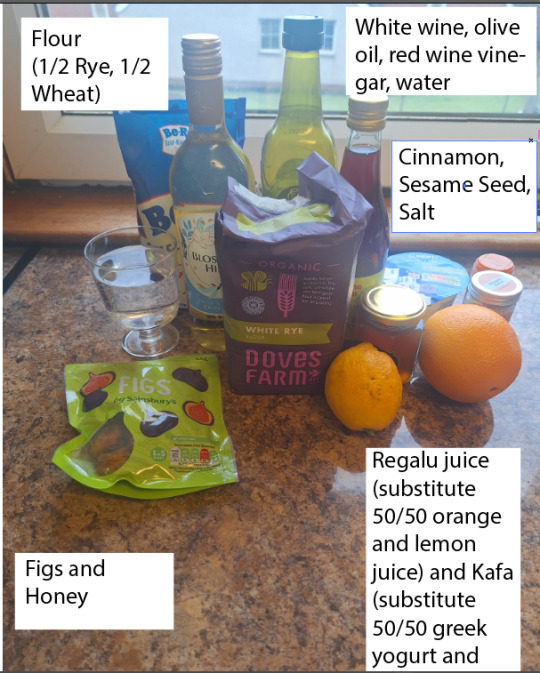
The Cakes
(Note that Kishetal has no distinct set of measurements nor are recipes recorded. Recipes are typically passed down orally and differ greatly between regions and even families. Adjust ingredients to one's own liking)
1 ¾ cups Rye Flour
1 ¼ Unbleached Wheat Flour
½ cup Water
1 Tbsp Olive Oil or Untoasted Sesame Oil
2 Tbsp Sweet White Wine (Riesling or Muscat are suggested)
3 Tbsp Kafa (This Kishic yogurt drink can be substituted with equal parts plain greek yogurt and whole milk)
2 Tbsp Honey
1 Tbsp Red Wine Vinegar
2 ½ Tsp Untoasted White Sesame Seeds
½ Tsp Sinrian Cinnamon (Substitute Cassia Cinnamon)
¼ Tsp Ground Black Pepper
Toppings
1. This are meant to reflect Narul’s Preferred Toppings, though with the addition of more typically eastern additions
1-2 Dried figs chopped (Fresh figs may be substituted)
3 Tbsp Honey, warmed
2 Tbsp Regula Juice (Substitute 1:1 parts orange and lemon juice)
Ground black pepper to taste
Sesame Seeds to taste
Chibalan Salt to taste (Substitute: Flake Salt)
Torn mint leaves
Goat Butter, melted (Cow or sheep is also acceptable)
2. Other Toppings
Unsalted soft cheese such as ricotta
Yogurt
Dates
Crushed nuts (typically walnuts or pistachios)
Chopped Cherries or other fruits
Preparation
1. Combine all dry ingredients in a large bowl.
2. In a different bowl combine all liquid ingredients and whisk thoroughly.
3. Combine wet and dry ingredients, knead using your hands to form a firm ball, add water and flour as needed to achieve this.

4. Cover the dough with a damp towel and allow it to rest at room temperature for a minimum of 1 hour and a maximum of 4.
5. Preheat oven to 400 F or 200 C (fan 195 C).
6. Liberally dust a counter or large cutting board with rye flour. Dust a rolling pin or similar instrument with flour.
7. Place the rested dough onto the floured surface and roll out to approximately 1/4 inch
8. Using a biscuit cutter or knife, cut dough into cakes, these can be any number of shapes, delicately score the surface.
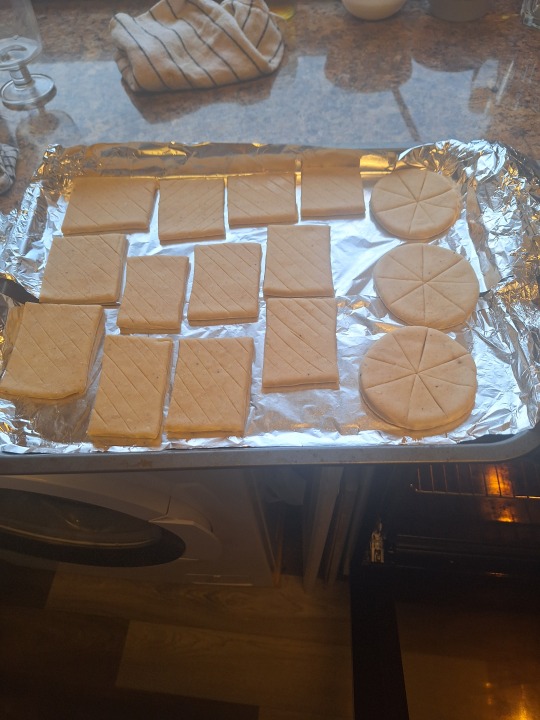
9. Place cakes on a covered cookie sheet making sure that they do not touch.
10. Bake for 10-15 minutes until golden or lightly browned.
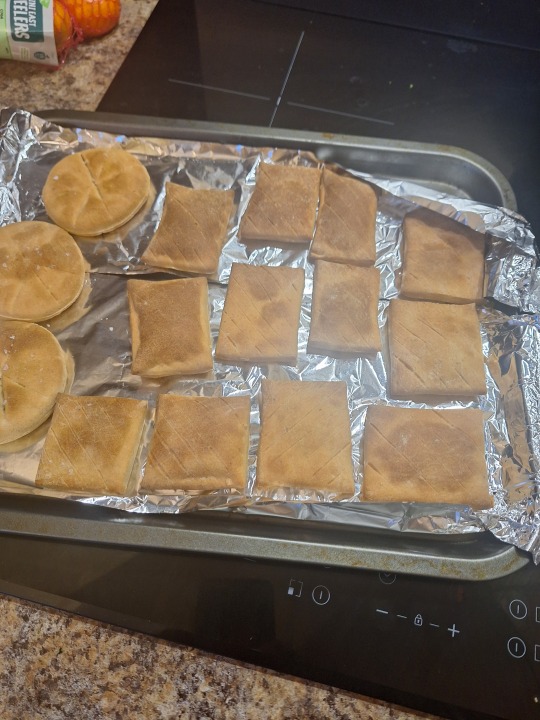
11. Remove and immeditately apply melted butter, honey, and regalu juice to surface. Allow to sit and cool for at least 5 minutes (Kipisa is not eaten hot. The more time is allowed for the absorption of the toppings, the better)
12. Once cool, add additional toppings. It is not unusual at this point to add additional butter and honey, nor is it unheard to dip the cake in the regalu juice and butter while eating it.

13. Enjoy!

I probably should have a taglist but I don't know who all would be on it, whoops. So I'm just tagging my followers that liked the original post @patternwelded-quill , @skyderman , @flaneurarbiter , @jclibanwrites , @alnaperera, @rhokisb, @blackblooms , @lord-nichron , @kosmic-kore , @friendlyshaped , @axl-ul , @talesfromtheunknowable , @wylanzahn , @dyrewrites , @foragedbonesblog
#writeblr#writing#fantasy#worldbuilding#queer fantasy#fantasy food#fantasy writing#fantasy world#world building#testamentsofthegreensea#narul#WIP#100 followers#thank you guys so much!#Let me know if y'all want to be tagged in this sort of thing in the future
38 notes
·
View notes
Text
Orange, Ricotta, Olive Oil and Polenta Cake

Ever since Jules read the recipe of this Orange, Ricotta, Olive Oil and Polenta Cake in last month’s issue of The Simple Things, she’s fancied that Sardinian cake. So, I baked it for her, not knowing that she wanted to make it, too; robbing her of half the pleasure! It’s is fragrant and most and all over beautiful enough to make up for it though!
Ingredients (serves 6 to 8):
1/3 cup demerara sugar
2 tablespoons water
3 oranges, rinsed
200 millilitres/1 cup olive oil
2/3 cups + 1/4 cup caster sugar
a pinch sea salt flakes
250 grams/8.8 ounces Ricotta
1 1/2 large lemons
4 large eggs
1/2 cup polenta
1 cup plain flour
2 teaspoons baking powder
Preheat oven to 160°C/320°F. Generously grease a 20cm/7.85” cake tin with olive oil, and line the edges with baking paper. Set aside.
In a small saucepan, combine demerara sugar and water. Heat over medium flame, stirring with a wooden spoon until sugar is completely dissolved. Then, increase heat and cook until bubbling and just taking a lovely amber colour. Remove from the heat, and pour caramel at the bottom of prepared pan, to coat the bottom.
Slice one of the oranges thinly, and press orange slices onto the caramel at the bottom of the cake tin; set aside.
In a large bowl, combine olive oil, caster sugar, sea salt flakes and Ricotta. Grate in the zest of one orange and one lemon, then, thoroughly squeeze in the juice of both oranges and lemons. Whisk until well-blended. Add the eggs, one at a time, whisking well after each addition.
In a medium bowl, combine polenta, flour and baking powder. Give a good stir.
Whisk dry ingredients into the wet ingredient mixture, until you have a rather runny and smooth batter.
Pour batter over the orange slices and caramel. Place in the middle of the hot oven, and bake, at 160°C/320°F, 50 minutes, or until a toothpick inserted in the middle of the cake comes out clean. Remove from the oven, and let cool, 10 minutes, before gently upturning onto serving plate. Peel off baking paper.
Serve Orange, Ricotta, Olive Oil and Polenta Cake with coffee or tea, or even a scoop of Rosemary Olive Oil Ice Cream!
#Recipe#Food#Orange Ricotta Olive Oil and Polenta Cake#Orange Ricotta Olive Oil and Polenta Cake recipe#Orange Polenta Cake#Polenta Cake#Polenta Cake recipe#Cake#Cake recipe#Oranges#Lemons#Olive Oil#Polenta#Flour#Eggs#Sugar#Caster Sugar#Demerara Sugar#Caramel#Orange Juice#Fresh Orange Juice#Orange Zest#Lemon Juice#Fresh Lemon Juice#Lemon Zest#Sardinian Cuisine#Italian Cuisine#Italian recipe#Italian Trattoria#The Simple Things
1 note
·
View note
Photo

Olive Oil And Ricotta Cake With Blood Orange Icing
http://brookelark.com/blog/2017/2/23/luxardo-cherry-olive-oil-and-ricotta-cake-with-blood-orange-icing?rq=cake
49 notes
·
View notes